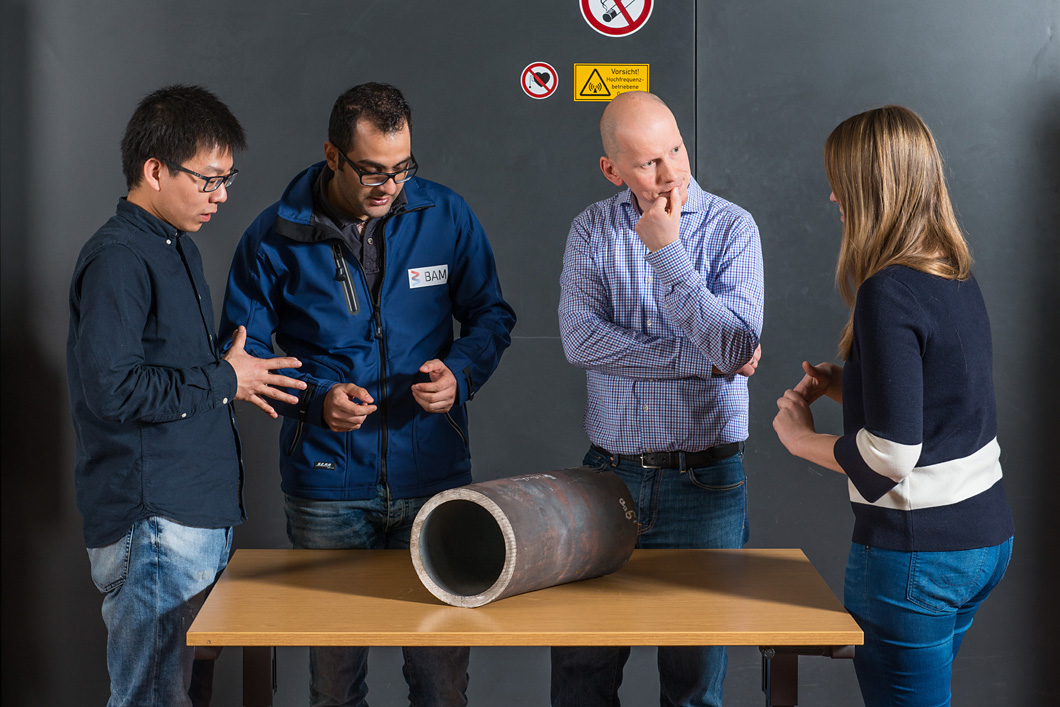
The team around Dr.-Ing. Jürgen Olbricht examines a piece of a power plant steam line (from left to right: Dong Wang, Dr.-Ing. Hamed Ravash, Dr.-Ing. Jürgen Olbricht and Maria Jürgens).
Source: BAM, photo: Michael Danner
A young international researchers’ quartet around Dr.-Ing. Jürgen Olbricht makes metal samples glow. The main focus lies in the energy sector conversion and the transition period.
A small international team is working on a large, essentially German topic – energy transition. Specifically: the path that leads to it, i.e. the transition phase. Of course, this path is technically challenging. The research group is currently planning to work on a steel installation component. Maria Jürgens and Jürgen Olbricht discuss how they can test the material with their colleagues Hamed Ravash from Iran, and Dong Wang from China. Only odd thing is that this piece of pipe does not come from a renewable energy producing installation but from a coal-fired power plant.
However, the four scientists are dealing with this technology in great detail. The energy transition requires the life of some of these conventional power plants to extend beyond 2050. Materials scientist Maria Jürgens explains that this requires coal-fired power plants to function under completely new operating conditions. Sometimes the boiler needs to be turned on then off again, depending on how they will be needed as gap fillers in the energy mix. These installations have not been designed for this cyclical change so they find it particularly strenuous. The "FLEXIKON” project sets out to establish which steels are best suited for steam lines and boilers under the changed conditions.
Hamed Ravash came from Belgium to Berlin for this purpose. There he worked on material models and wrote his thesis on this topic. Until recently, the young Chinese material scientist Dong Wang studied in Aachen. Now he researches for his Ph.D. thesis here, similar to Maria Jürgens. Dong Wang monitors the corrosion of the cyclical highs and lows, Maria tests the mechanical damage and Jürgen Olbricht heads the project.
Olbricht is proud that the work of the research group has a strong practical relevance. He believes that the following factors act as driving forces: as young researchers, they help set one of the many points in energy transition. How exactly do they do that? For example, they can cut out small samples from the supplied pieces of a power plant steam line. Each sample looks like a pillar since it is curved slightly inward. This makes it easy to clamp into a measuring device and test it under compression and tension at up to 700 degrees Celsius. In this case, the sample is a sort of delicacy for the young scientists: the pipe had already been used for 70,000 operating hours. Such used parts are good for testing how well older power plants tolerate the frequent load changes. After all, new pipes are usually sent for testing. Once again – practice is key.


